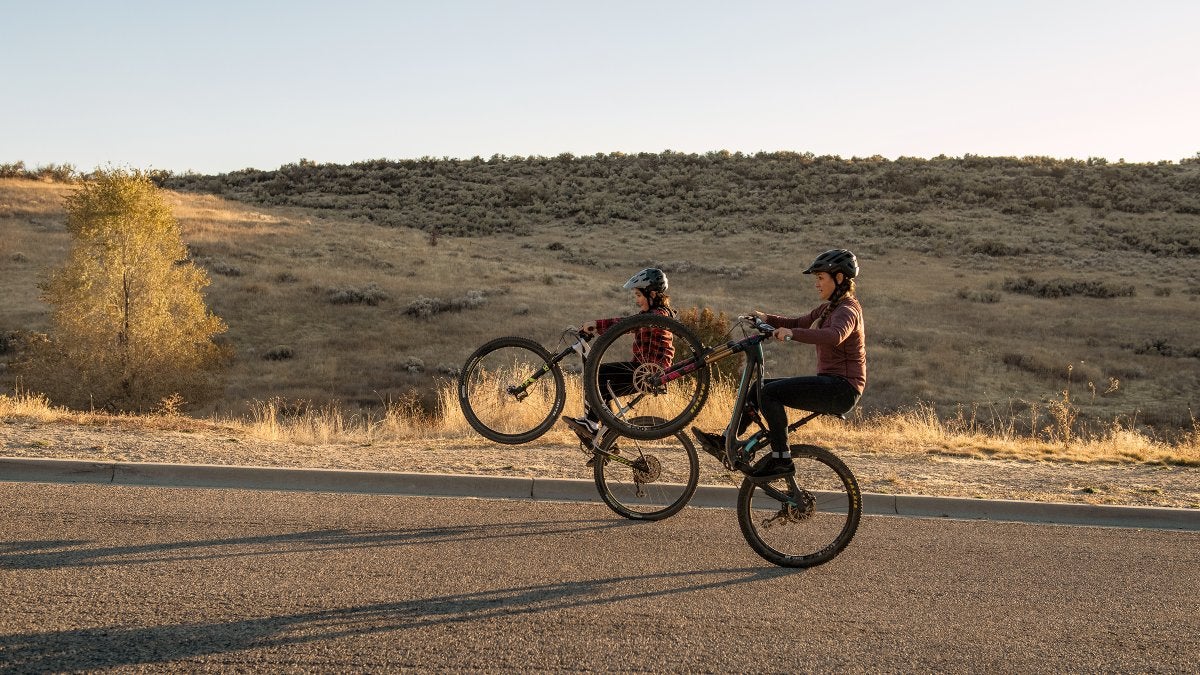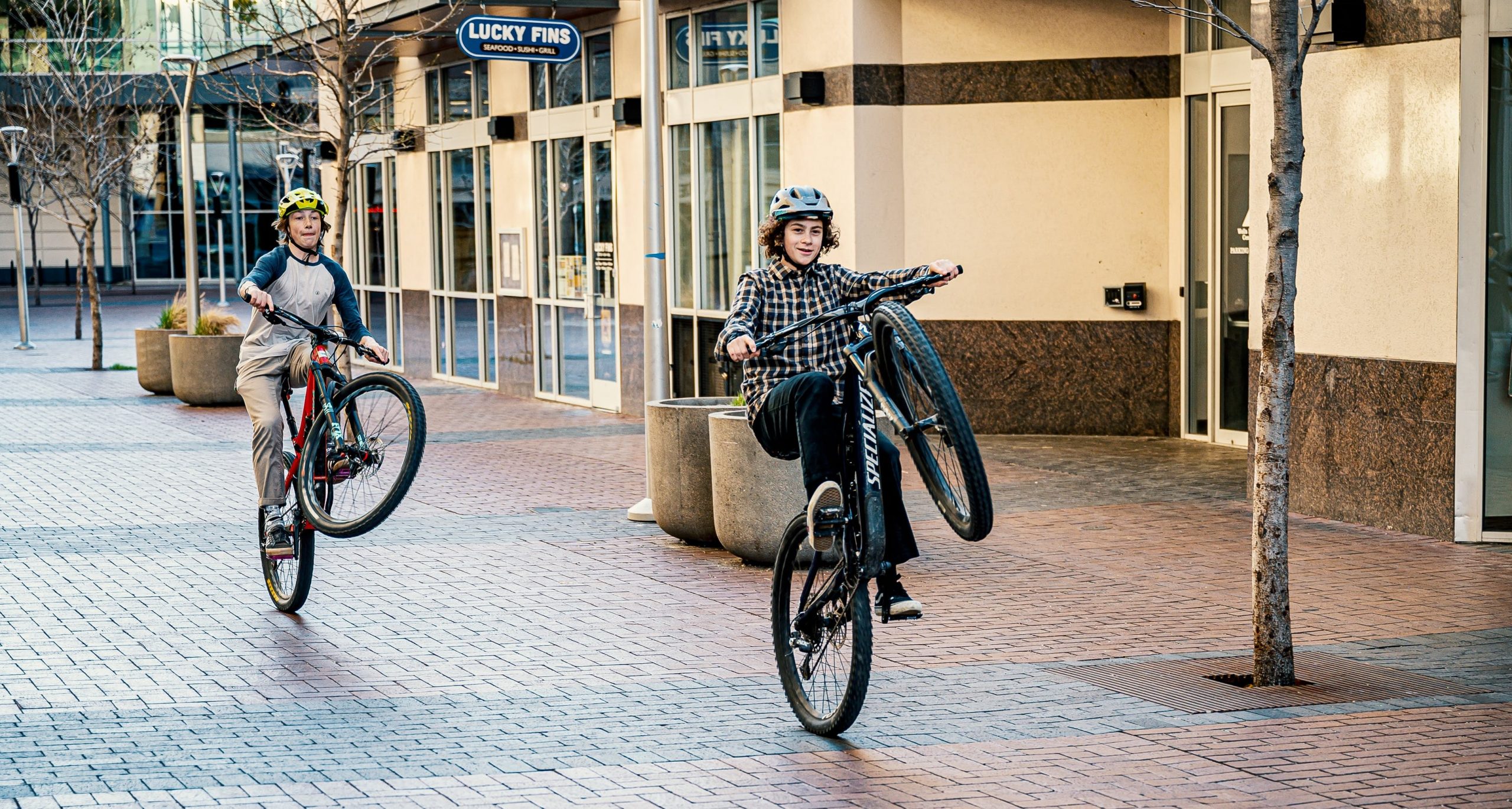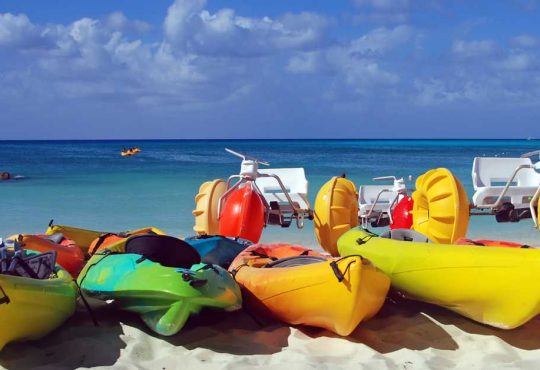The surge has angered motorcyclists since the late 1800s, when the penny-farthing– with its gigantic front wheel, tiny rear wheel and saddle four feet off the ground – it gave way to the simpler “safety bike”, with wheels of equal size.
The father of the wheelie was a telegraph messenger named Daniel J. Canary, a champion of “whimsical ride” who figured out how to get the rear wheel of the penny-farthing off the ground. In August 1890, he used a safety bicycle to accomplish “the then considered impossible feat of riding on his rear wheel, with the front wheel raised”.
Here’s how the Chicago Tribune described the surge in 1896. The article, entitled “Wizards of the Wheel,” chronicled the origins of “trick riding” and noted why the discipline had only a few daring pioneers: “The union of strength and agility with perseverance and confidence in itself it is not common enough among men. “(He didn’t say anything about women.)
“Like the art of the contortionist, trick riding requires extraordinary flexibility of the body and limbs,” wrote the author, adding something that rings true today as it did 125 years ago: “Combined with this must be patience and perseverance. long and relentless practice. ”
Extraordinary elasticity is overrated. Those last four words mark the difference, then and now, between Wizards of the Wheel and aspirants.
It turns out that long and relentless practice hurts. After the first day, I feel like I’ve been scourged with bars of soap in my socks. I turn immediately to some experts.
Lindsey Richter, founder of Ladies AllRide in women’s mountain biking camps, he says the wheelie is mostly about torque: getting the rear wheel to accelerate with enough power to make the front wheel go up. To make this happen on a motorcycle, either you turn the engine and unload the clutch, or just open the throttle. On a bike, it’s a seated, low-speed procedure initiated by a powerful punch on the pedal. Your arms don’t lift the front wheel, he says, as much as they “encourage” it.
Braydon Bringhurst, a Canyon bike the ambassador who can land with a back flip in a wheelie, orders me to lower the saddle two inches, lowering the center of gravity, and to practice placing two objects – cones, stones, gloves, whatever – a few feet away as the target distance. Once I manage to wheelie eight times out of ten, he says, I should push them further away.
When I watch teenage boys manual the waves of dirt on a BMX track, a little voice whispers, Maybe in your next life.
From my friend Lance Trappe, who attended Cirque du Soleil, two shows a day, 478 shows a year, for 14 years: move your knees from side to side to keep balance. Also, practice on a smooth surface and an uphill slope. But the secret sauce, he says, is the rear brake, which lowers the front wheel to protect itself from loop-outs.
So my mission for the next hundreds of wheelies is to train my right index finger.
Not to brag, but I have an extraordinarily flexible index. He can strum a guitar, pull a trigger, dead daisies, wield a brush, give directions and pick anchovies from pizza. He knows very well how to step on a brake.
But something short-circuits when my front wheel takes off. All I ask of my figure is a poor millimeter or two of precise modulation. Under pressure to save me from the loop out, he chokes. I spend hundreds of wheelies screaming at my finger like a drill sergeant. It’s as useless as a football club.
Meanwhile, the manual looks even more desperate. After my accident, I buy knee pads and train on a baseball field. The grass rubs my speed, which makes me wobble the handlebars. I land on a turned front wheel and get ejected into the left field, where I pick up the dead grass from my teeth.
At the next session, Kenny arrives with two gifts: a full-face helmet, donated by a friend who works at Fly Racing, and the suggestion to look into a manual machine.
A manual car is basically a floating zone simulator, designed to help you locate the balance point while a static contraption holds the rear wheel securely in place. Sender Ramps, a Seattle-based company, ships me its Core Skills Trainer manual machine, which Austin and I assemble with an electric drill and minimal fights.
In the security of the garage (my husband vetoes the living room) I find the balance point after six attempts with the manual machine. The sensation unexpectedly reminds me of my days as a competitive nautical skier. My muscles begin to memorize the dance of opposing forces – pulling the handlebars, pushing against the pedals – and the hip action that occurs in the middle, a quick, thrusting movement that mortifies my husband when I mimic him in public.
The manual machine bewitches my son, who sees it not as a training tool but as a giant toy. Austin suddenly decides to participate in the search for the surge. Like most children, his athleticism far outweighs his patience, and any skills that are not easily achieved are quickly abandoned. But as we try and fail, moaning and laughing, I notice a new quality popping up within him: perseverance.
When the pandemic strikes in March, the surges become therapy. The bike park shuts down, so Austin and I train on the street, where we’re cheered by the neighbors. Our ritual takes my child out of the house and me out of my anxious head.
My first big step comes with Wheelie No. 681. I enter the sweet spot and stay there for 12 pedal strokes. My gleeful giggle is a noise I haven’t heard in a while. The shot shifts to Austin, which also has a quantum leap in the buoyancy zone.
When I go to a mountain cabin for a week and a half challenging writing retreat, I take my bike and train alone in the snow. On the edge of a frozen lake, with a light pole as a target, I hold wheelie No. 1,086 in the buoyancy zone for what seems like an eternity. After that, I walk the distance, counting each step: 17 steps, about 34 feet.
Shop your cool gadgets only at CAFAGO.com
 CAFAGO electronic products are based on excellent designs and reliable quality. Which is why Cafago do technical quality check for the products they sell and strictly checked one by one before sending. Cafago.com also offers 2 years Warranty for most products in their website.
CAFAGO electronic products are based on excellent designs and reliable quality. Which is why Cafago do technical quality check for the products they sell and strictly checked one by one before sending. Cafago.com also offers 2 years Warranty for most products in their website.







